Withernsea Lighthouse, Lifeboat, and Shipwrecks
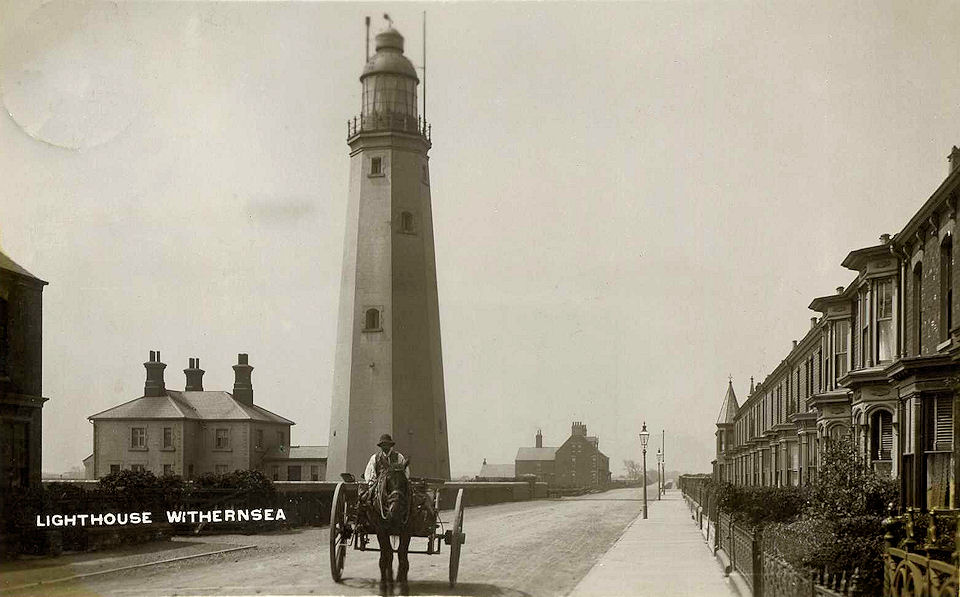 The lighthouse on Hull Road approx 1900. (from Phil Mathison)
The lighthouse on Hull Road approx 1900. (from Phil Mathison)
The lighthouse was built during 1892 and 1893, over a period of just 18 months. It was opened on 1st March 1894, sadly too late to save the pier. The lighthouse is built of bricks and concrete in an octagonal shape, although the inside of the lighthouse is round. It stands at 120 feet high with a huge weathervane on top, and is the only lighthouse with a town between itself and the sea. The light is 113 feet above the ground and was first lit in March 1894. For 82 years the lighthouse guided ships to safety before it was finally turned off in July 1976.
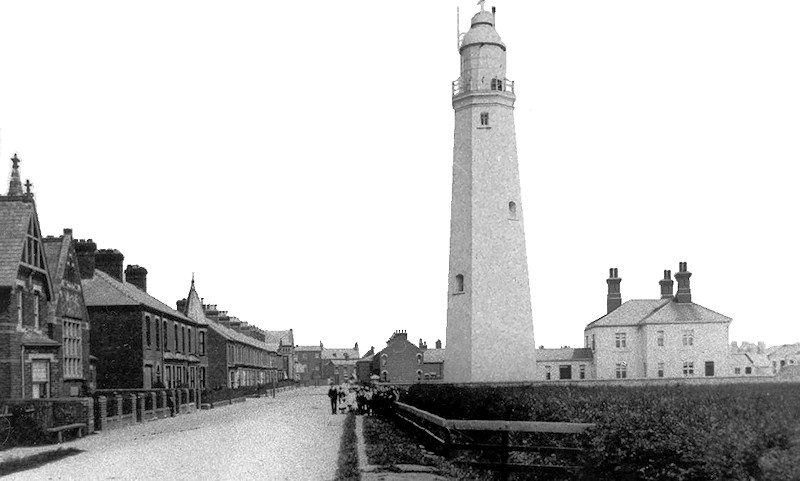
Hull Road and Lighthouse
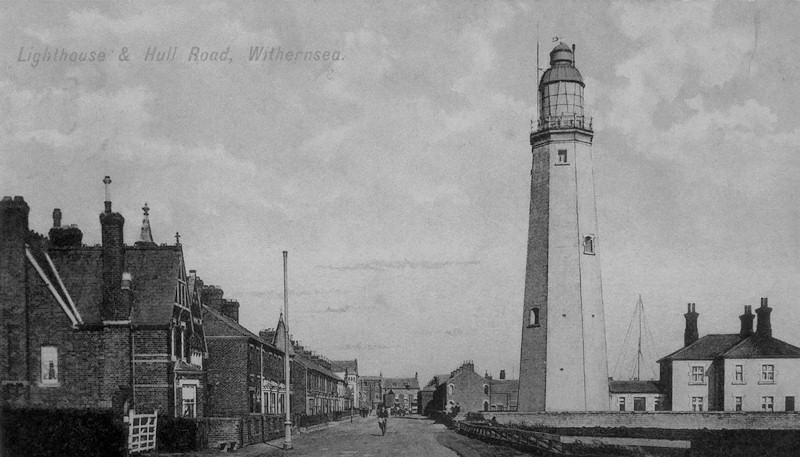
Early postcard showing Hull Road with the school and the Lighthouse.
The Withernsea Lifeboat
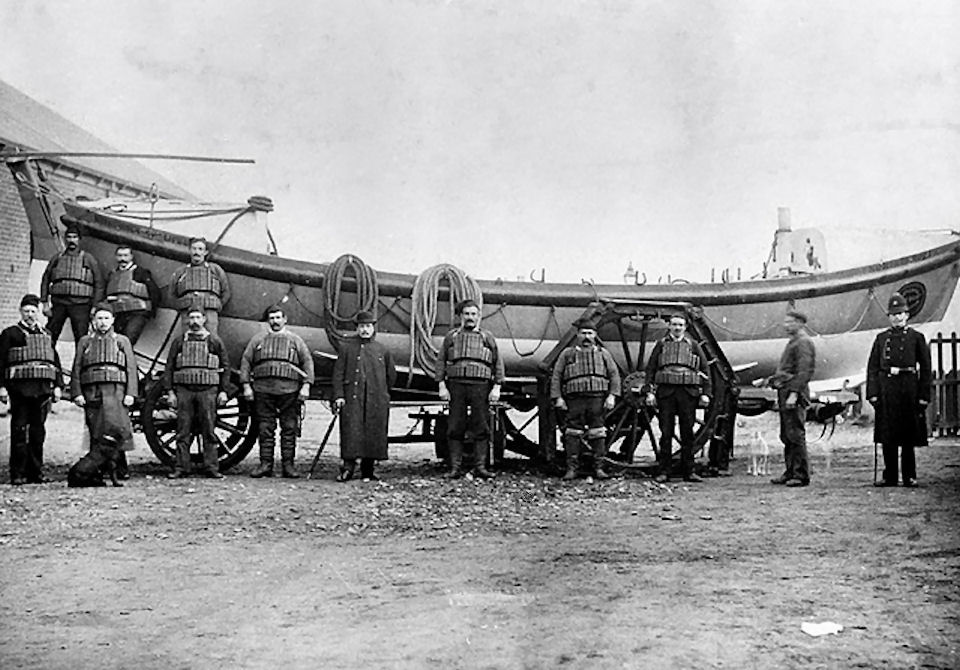
The Withernsea Lifeboat Admiral Rous and her crew in 1893 (Picture from Paul Baker)
The three men standing on the carriage:C.Hogg, unknown, Harry Hogson.
Crew standing: Mr Rees (Lighthouse keeper), Dr Arthur Edward Sproule, Chris Gallagher, Peter Parkinson, Horatio Harriman Ayre, George Hogson, George Bishop, Jack Drewery, unknown, P.C. Calam.
A lifeboat was first stationed in Withernsea in 1862 by the RNLI because of the large amount of shipping traffic entering the River Humber. The first boathouse was built near to the lighthouse, on Arthur Street opposit Walter Street.
To be closer to the sea front, the boathouse was moved to Seaside Road where it was used from 1883.
(It can be seen on the picture of Seaside road here )
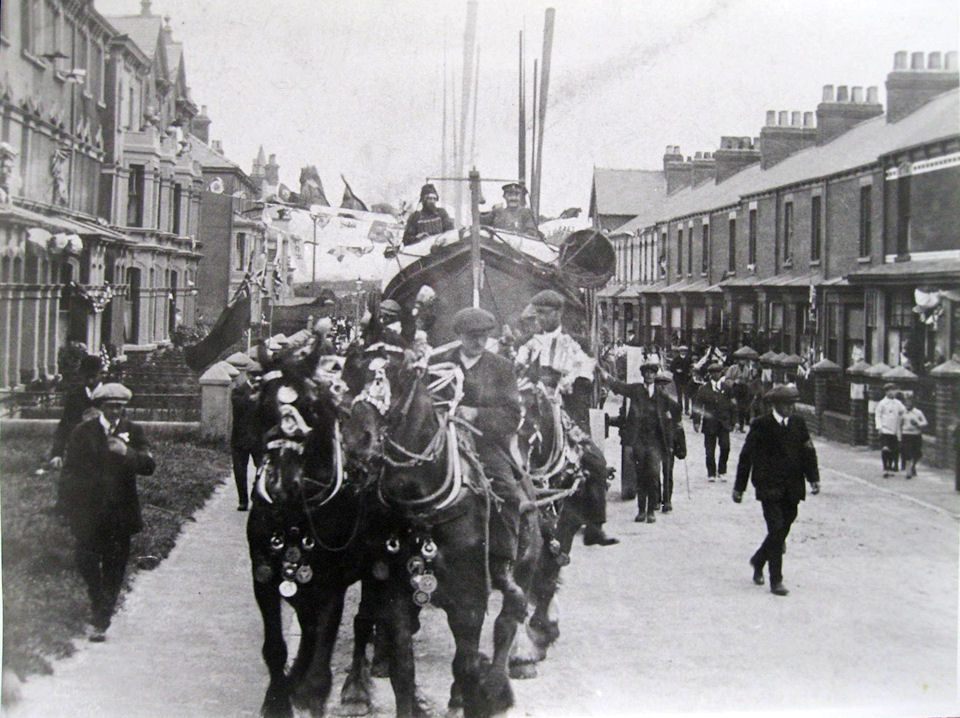
Withernsea Lifeboat on Princes Avenue during the Coronation parade in 1910. (picture from Paul Baker)
Withernsea had a total of five lifeboats over the years. They were launched on 39 rescue missions and saved 88 lives.
In 1913 a motor powered lifeboat was stationed at the mouth of the River Humber, and the Withernsea lifeboat station was closed down. The Withernsea lifeboat, the Docea Chapman, was moved to Easington where it would serve another 20 years and save 28 lives. It was eventually sold to a museum, renamed Louisa II and is now on display outside Glen Lyn Gorge in Lynmouth.
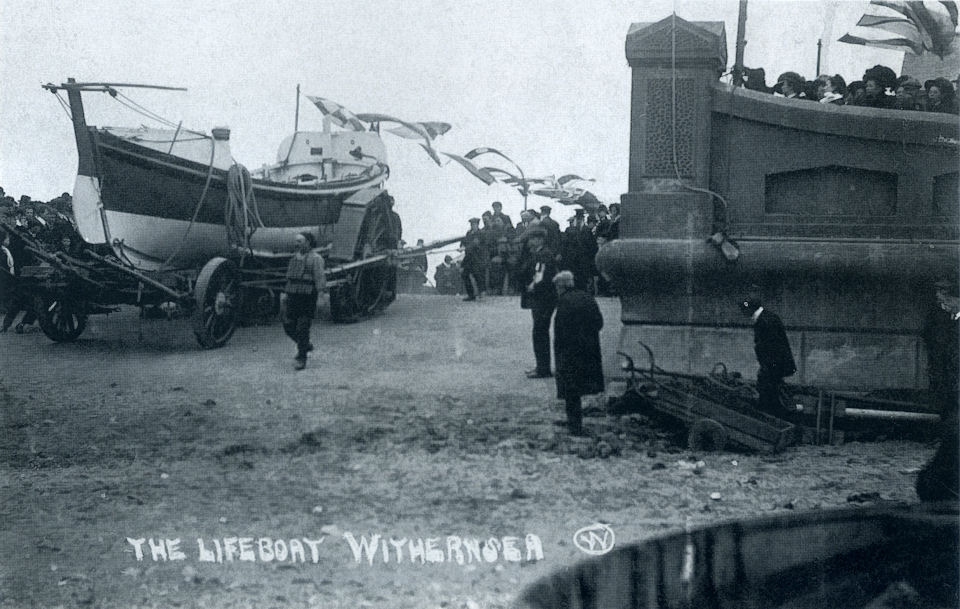 Withernsea Lifeboat the "Admiral Rous II" on the central slipway around 1900. (from Jack Whittaker)
Withernsea Lifeboat the "Admiral Rous II" on the central slipway around 1900. (from Jack Whittaker)
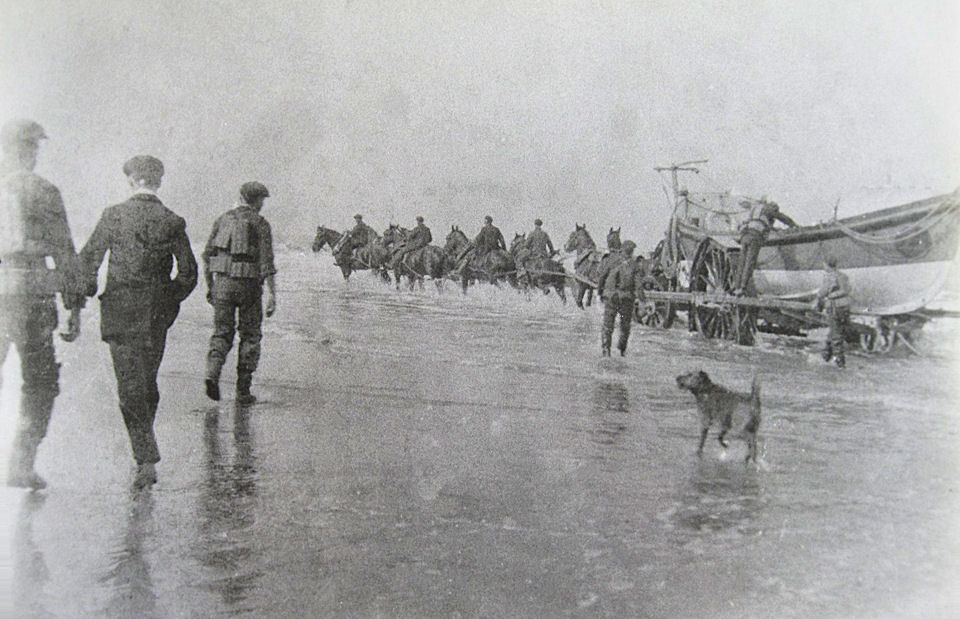
The Lifeboat being dragged out to see. (picture from Paul Baker)
The local busineses provided the horses for launching on a retained basis. Six or more horses were used to pull the boat and to launch it into the sea.
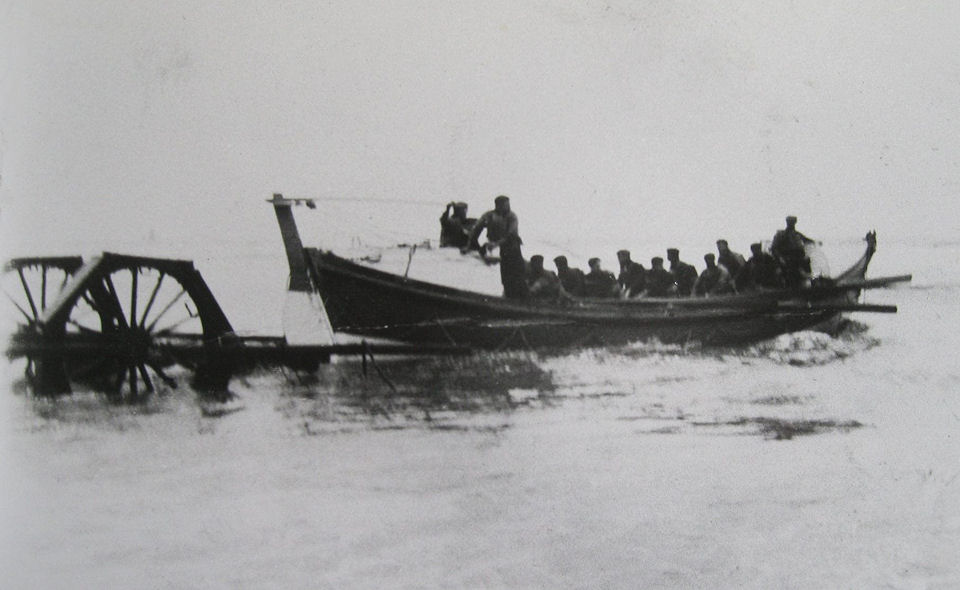
The lifeboat being launched (picture from Paul Baker)
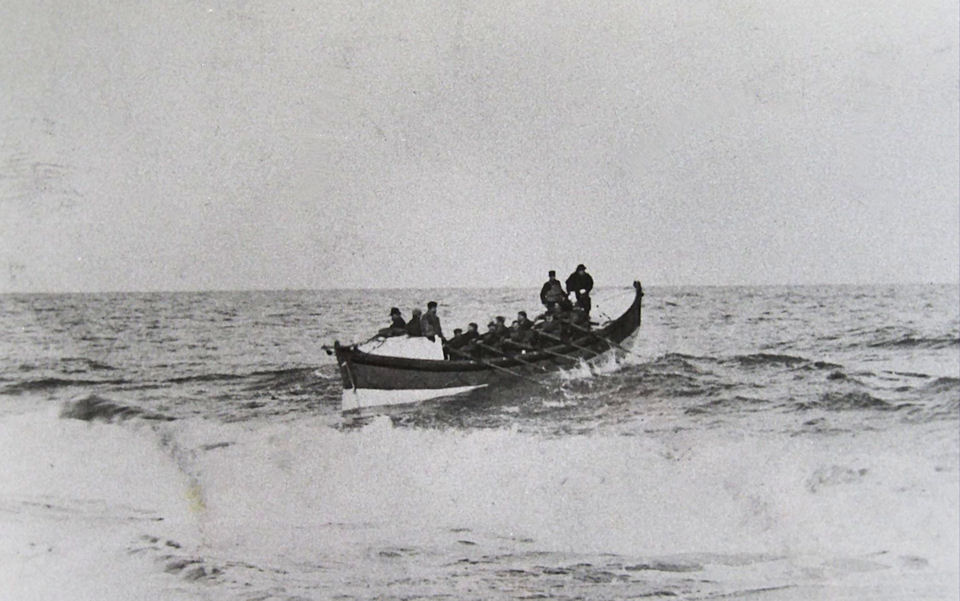
The Withernsea Lifeboat at sea (picture from Paul Baker)
In 1974 an inshore lifeboat (ILB) station was established at Withernsea, with a D class lifeboat, which was kept on the seafront at the south end of the town. In 1983 another boathouse was built for Withernsea’s D-Class, followed by the new boathouse built in March 1998.
Shipwrecks near Withernsea
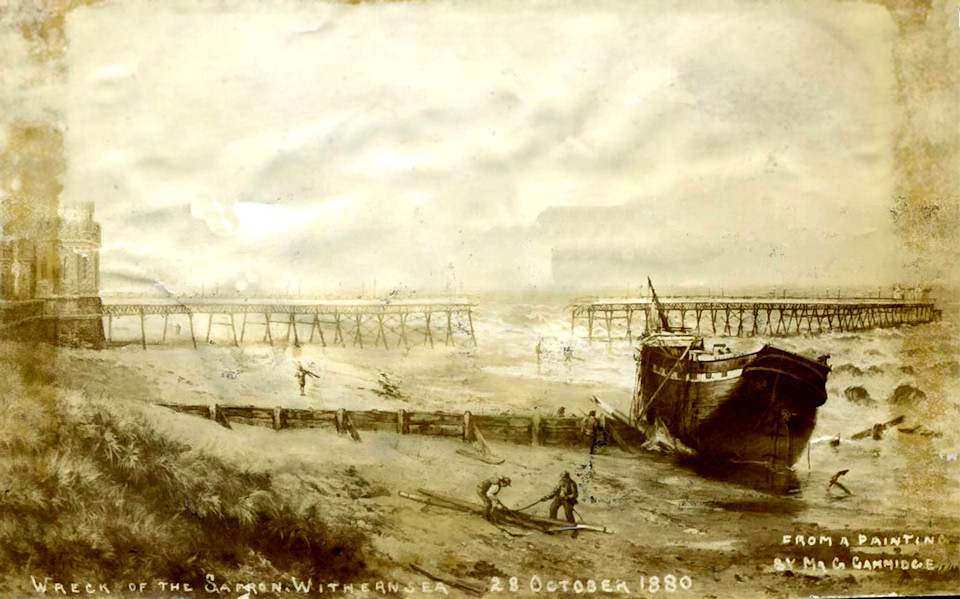 The coal barge Saffron punched a 200ft hole through the middle of the Withernsea Pier during the great storm on the 28th of October 1880.
The coal barge Saffron punched a 200ft hole through the middle of the Withernsea Pier during the great storm on the 28th of October 1880.
The Jabez hit the end of the Withernsea pier in 1880.
In 1890 the pier was hit by the fishing boat Genesta destroying more than half the pier.
In 1893 the pier was struck by the Grimsby bound Henry Parr.
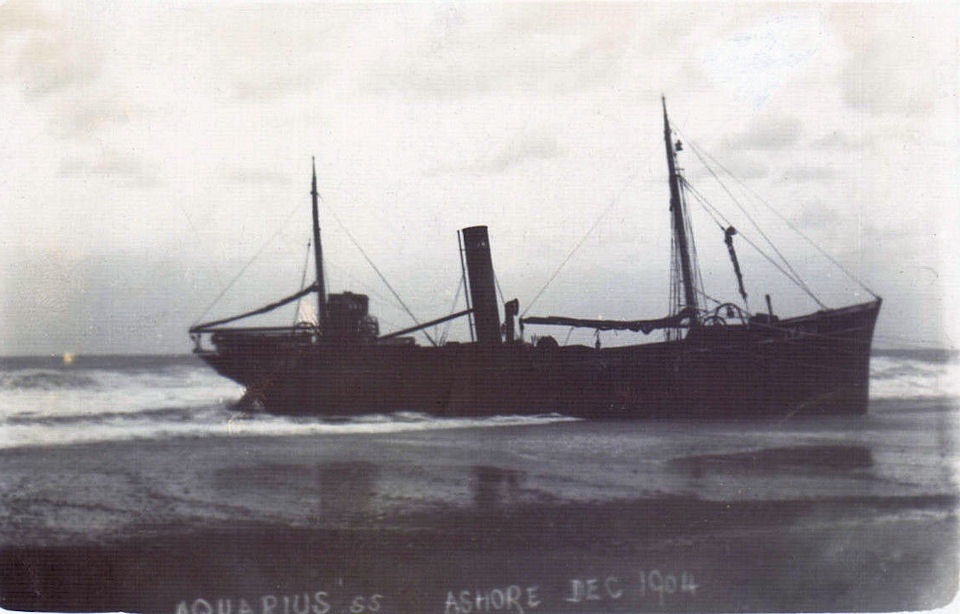
The British fishing trawler SS Aquarius ashore south of Withernsea December 1904.
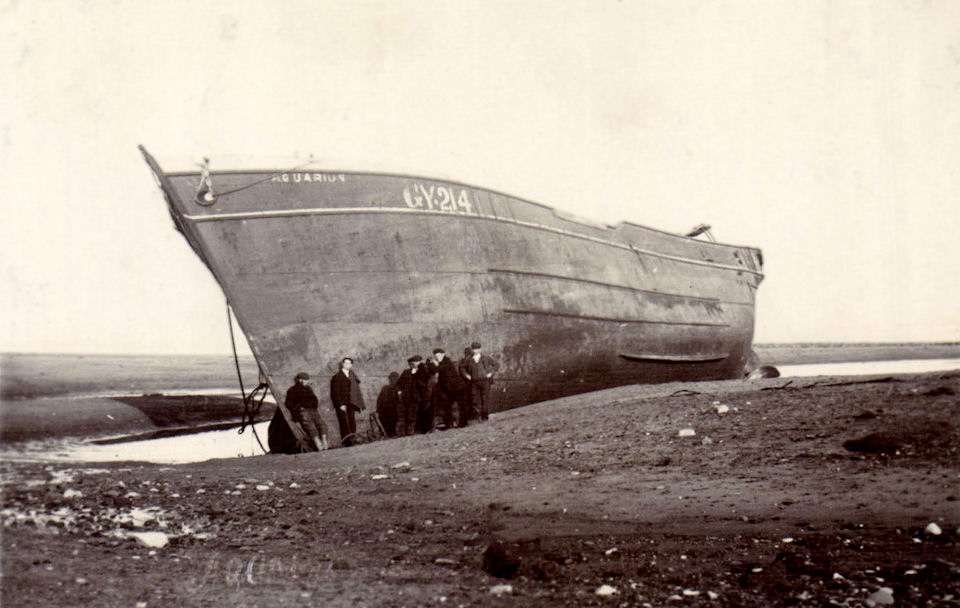
Wreck of the Aquarius.
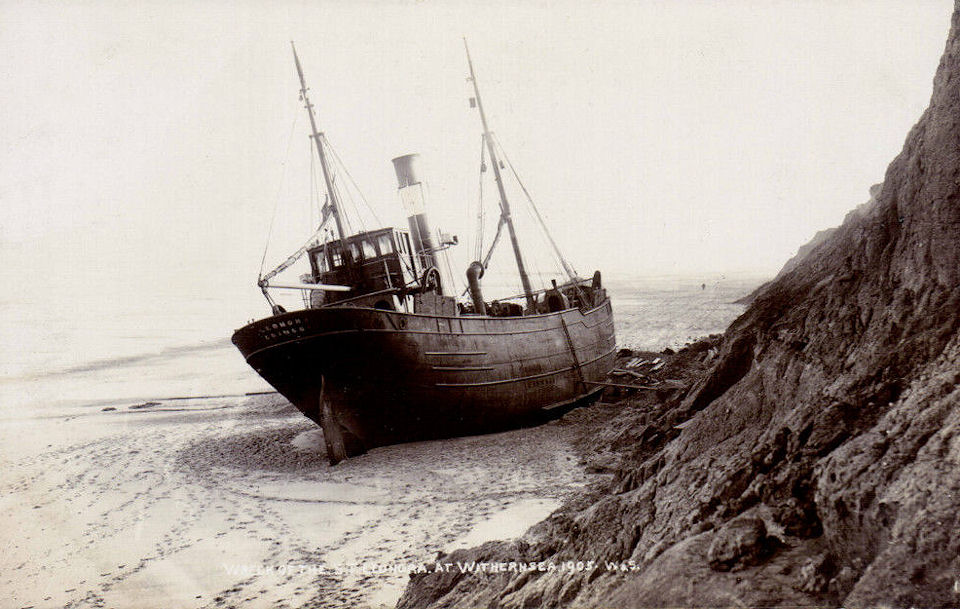
S.T.Leonora ashore at Withernsea 1905.
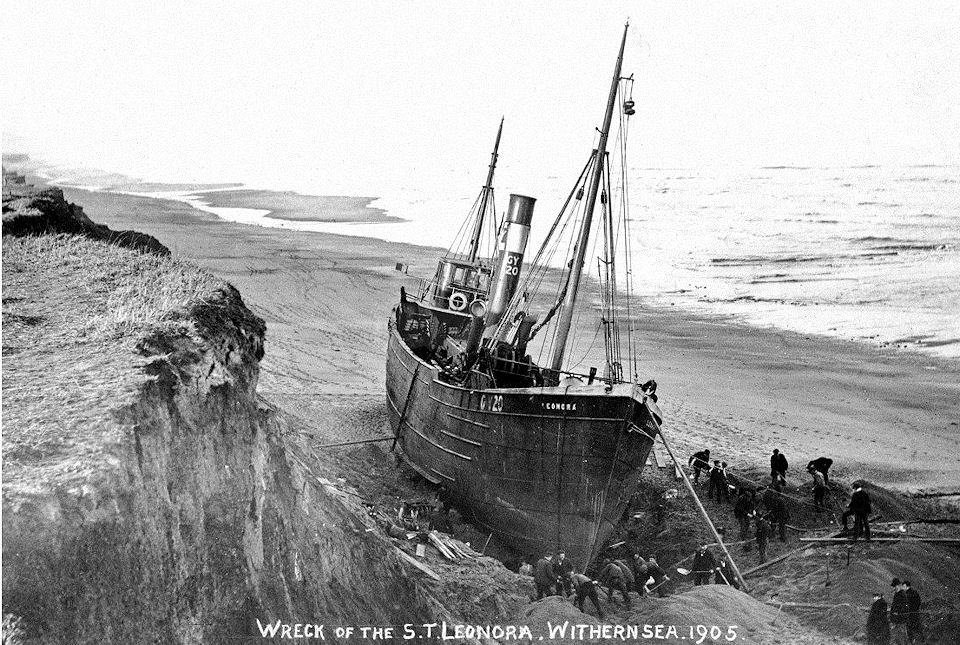
S.T.Leonora ashore at Withernsea 1905.
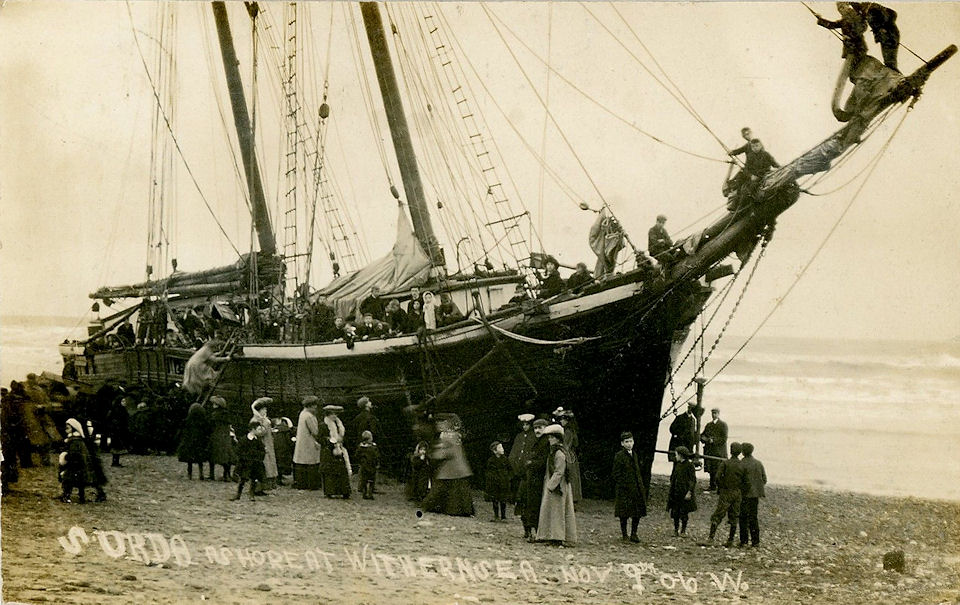
The Norwegian Schooner SV. Urda was on a voyage from Sandefjord to Newcastle with pit props and railway sleepers. Afer missing the entrance to the Tyne in heavy seas and gale-force winds, she drifted down the East Coast and eventually ran aground at Withernsea on the 9th November 1906.
The ships bell is now on display at the Withernsea Lighthouse Museum.
The British steamship Empress struck a german mine and sank 4.4miles ESE of Withernsea on the 31st July 1917.
The Paraciers sank 6.3miles ENE fo Withernsea on the 17th September 1917.
The Lyra sank 3.2miles ESE of Withernsea on the 4th November 1917.
The Georgios Antippa sank 6.2miles East of Withernsea on the 28th November 1917.
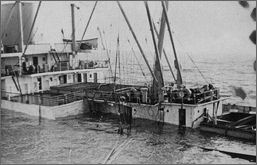
On the 4th November 1939 the 11.000 ton Danish passenger and cargo ship M V Canada left King George V Dock in Hull with 8,000 tons of soya beans. She hit a magnetic mine 6 miles from Withernsea and was deliberately ran aground just south of Withernsea. All 64 crew and passengers on board were rescued.
The the ship was later destroyed by shelling to prevent enemy aircraft from using it for navigation.
The remains lies in about 13 meters of water marked by a large wreck buoy.
The British steam cargo ship SS Dryburgh collided with the wreck of the Canada on the 11th November 1939 and sank nearby.
On 14th November 1939 the Greek SS Georgios struck the wreck of the Canada.
Attempts to refloat the Georgios failed, and she now lies in several pieces at the bottom of the sea just outside the Canada.
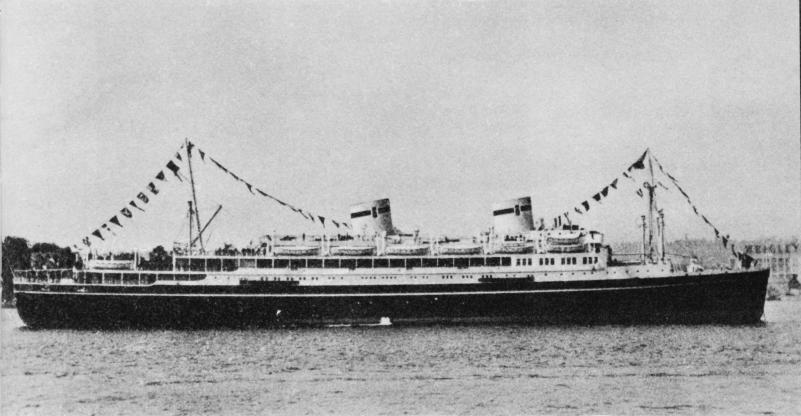
The 14.000 ton Polish ocean liner Pilsudski struck a mine some 20 miles offshore of Withernsea on the 26th November 1939.
After the explosions the ship began listing to port, and although giving the impression that it would sink quickly it lingered for several hours before finally sinking. Despite the choppy seas the close proximity of other ships and naval vessels allowed for a timely rescue of the crew. Of the approximately 180 crew on board all but two survived (some say ten).
She is the largest wreck on the Yorkshire Coast, and lies in several pieces 18 miles from the coast in thirty metres of water at 53.45.75N 00.45.67E.
The Steam and Motor Vessel Henry Woodall hit a german mine of the cost of Withernsea on the 10th May 1940.
Seven members of the crew were lost. The wreck lies about 3 miles east of the
Withernsea life boat station.
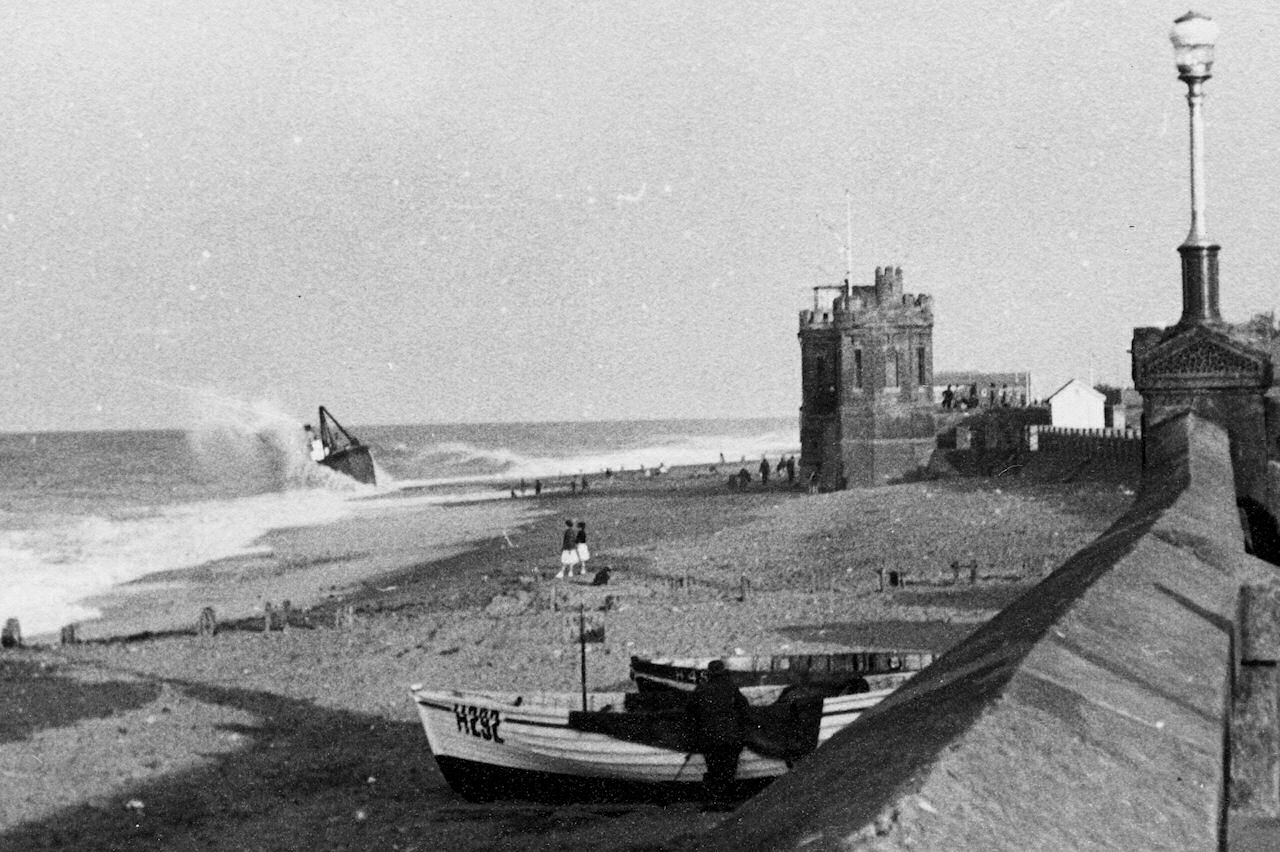
A ship called Basalt was doing work on the sewage outfall in the late 1950 's it got washed ashore more than once.
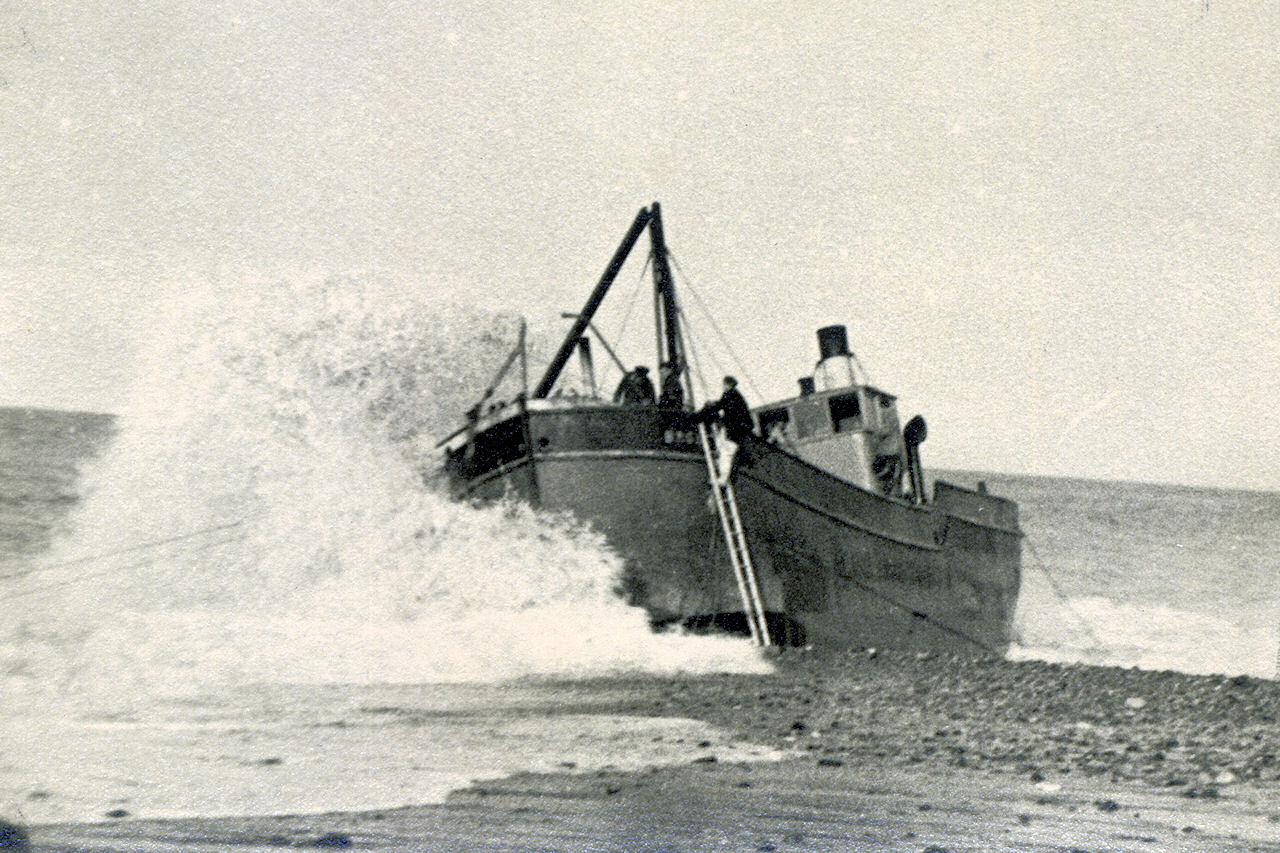
Go to pictures of Withernsea Schools